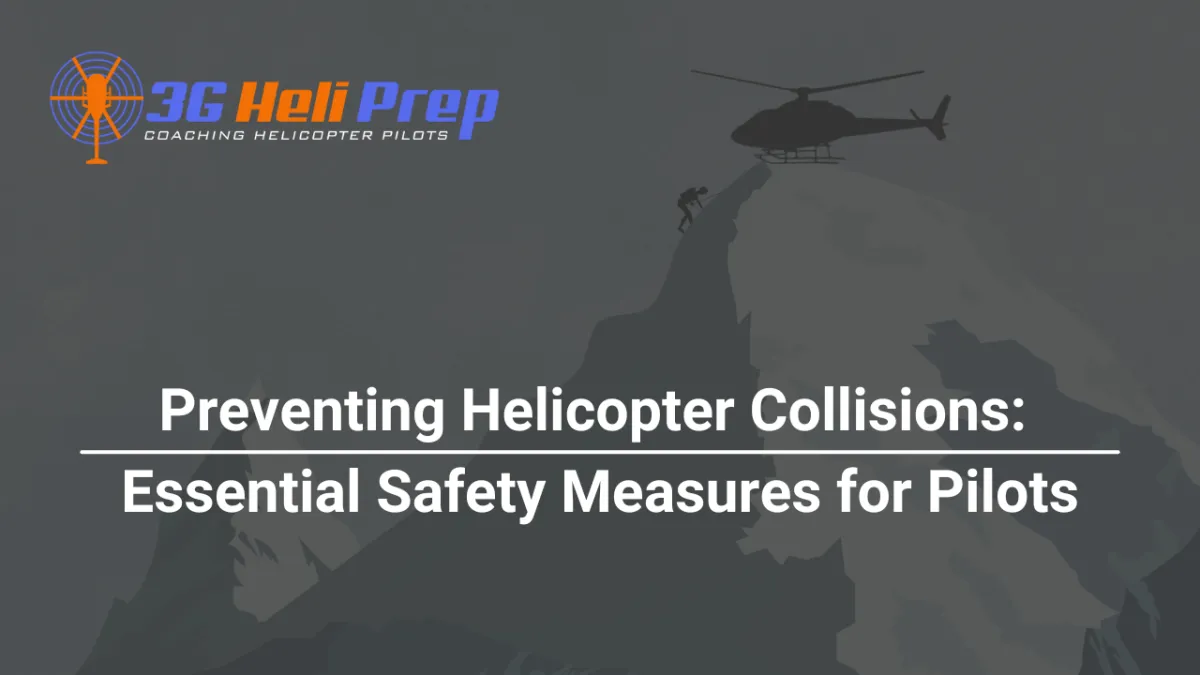
Preventing Helicopter Collisions: Essential Safety Measures for Pilots
Collisions between aircraft are rare, but when they do happen, they’re almost always tragic. The recent crash near Washington, D.C., involving a small plane and a helicopter has once again put aviation safety in the spotlight an aspiring helicopter pilot (or even a seasoned one), knowing how to prevent midair collisions is a skill that could save lives—including your own. So, let’s talk about the most effective ways to keep your rotors spinning safely in shared airspace.
1. Stay Vigilant—See and Be Seen
One of the most fundamental rules of aviation safety is “see and avoid.” Helicopters often share airspace with airplanes, drones, and even birds (who don’t file flight plans, unfortunately). This means pilots must always be scanning for traffic, especially in busy airspace like near airports, heliports, and high-traffic flight corridors.
Use proper scanning techniques – Look left to right, near to far, and make subtle head movements to minimize blind spots.
Use exterior lighting – Even in daylight, turning on strobes or landing lights increases your visibility.
Be mindful of blind spots – The structure of a helicopter can block visibility, so shift positions when necessary.
2. Communicate Like Your Life Depends on It (Because It Might)
Miscommunication is a major factor in many aviation incidents. Helicopter pilots should always be proactive on the radio and use proper phraseology when operating near other aircraft.
Monitor common frequencies – ATC advisories, UNICOM, and CTAF are your best friends when flying in uncontrolled airspace.
Announce your position – Especially during approaches, departures, and when transitioning through known flight paths.
Listen carefully – Don’t just broadcast; make sure you’re also hearing what’s happening around you.
3. Fly Defensively—Don’t Assume Anything
Ever driven in traffic and thought, “That guy has no clue what he’s doing”? The same applies to aviation. Assume other pilots might make mistakes and plan accordingly.
Expect the unexpected – An aircraft might be flying without a radio, a drone could be operating illegally, or a pilot might misjudge altitude separation.
Avoid known collision hot spots – Busy corridors, final approaches, and uncontrolled fields can be accident-prone. Stay alert in these areas.
Fly predictably – Abrupt maneuvers increase collision risk. Stick to standard flight paths when possible.
4. Use Technology to Your Advantage
Modern helicopters are equipped with tools that make avoiding collisions easier. If your aircraft has tech that can help, use it!
ADS-B In/Out – This system allows aircraft to transmit and receive real-time location data, making it easier to spot traffic.
TCAS (Traffic Collision Avoidance System) – Some helicopters are equipped with TCAS, which alerts pilots to potential conflicts.
ForeFlight or Garmin Pilot – These apps can provide real-time traffic alerts, weather updates, and even visual terrain guidance.
5. Follow the Right-of-Way Rules
There’s an order to how things work in the sky. If you’re unsure who has the right-of-way, remember these basic rules:
Helicopters yield to balloons, gliders, and airships.
If two aircraft are converging at the same altitude, the one on the right has the right-of-way.
An aircraft in distress always has priority.
If overtaking another aircraft, pass to the right.
Knowing and following these simple rules will help keep the skies safer for everyone.
6. Be Cautious in Low-Level Operations
Helicopters often operate at lower altitudes than fixed-wing aircraft, which means they face unique risks—including power lines, towers, and other obstacles.
Fly at appropriate altitudes – Avoid unnecessary low-level flying outside of operational needs.
Watch for obstacles – Power lines, antennas, and construction cranes can be hard to spot. Check charts and NOTAMs for potential hazards.
Use wire-strike protection if available – Some helicopters are equipped with wire-cutting devices to prevent catastrophic accidents.
7. Never Assume You’re Alone in the Sky
Even in what seems like empty airspace, another aircraft could be just out of sight. The recent D.C. crash is a reminder that pilots must always expect other traffic, especially in uncontrolled airspace .
NOTAMs before flying* – Notices to Airmen (NOTAMs) provide information on flight restrictions and other hazards.
Fly with an escape plan – Always think ahead. If another aircraft suddenly appears in your flight path, where will you go?
Trust but verify ATC instructions – Controllers are human, too. If something doesn’t seem right, speak up.
Final Thoughts: Fly Smart, Stay Safe
Helicopters offer incredible freedom in the skies, but with that freedom comes responsibility. Whether you’re training for your private pilot certificate or logging commercial hours, keeping these safety tips in mind will make you a better, safer pilot.
✅ Stay alert
✅ Communicate clearly
✅ Use technology wisely
✅ Follow right-of-way rules
✅ Expect the unexpected
If you’re serious about becoming a helicopter pilot, check out our 21-Day Private Helicopter Pilot Course. We’ll teach you how to fly safely while having a blast. And if you’re worried about the cost, we’ve got you covered—here’s a guide on How to Pay for Flight School.
Fly safe, keep your head on a swivel, and I’ll see you in the sky! 🚁
3G Heli Prep Copyright 2024. All Rights Reserved

